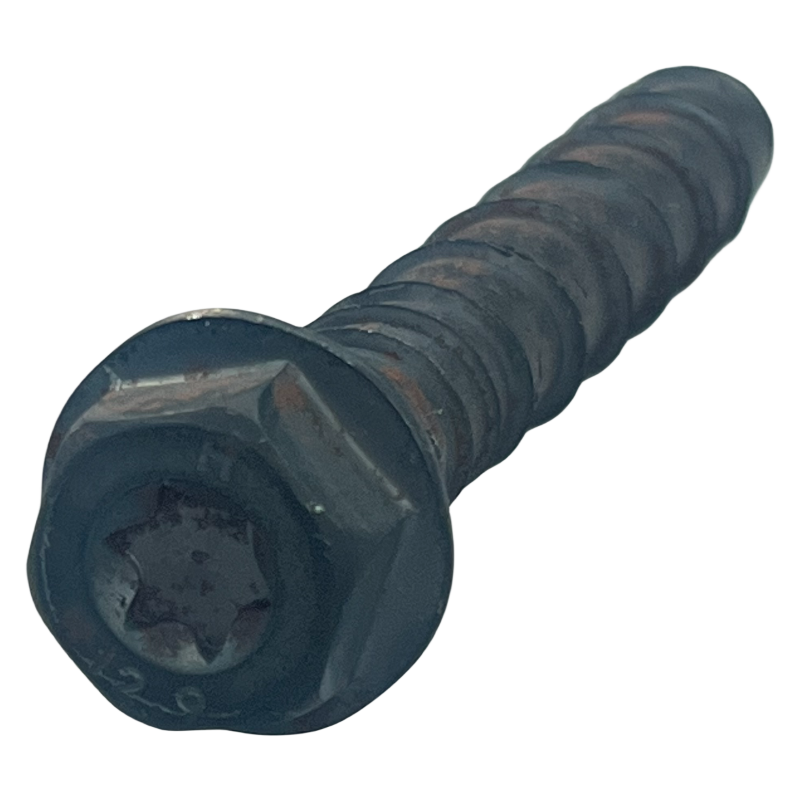Release time:2020-01-16 18:44 Browse:

As an indispensable part of modern architecture, Bridges, tunnels and other engineering fields, its importance is self-evident.
Material characteristics: Perfect combination of carbon steel and blackening treatment
Carbon steel, as the basic steel type, is widely used for its high strength, good plasticity and weldability. However, untreated carbon steel is prone to rust in wet or corrosive environments, affecting service life and safety. Therefore, it is particularly important to blacken carbon steel. Blackening, also known as bluing, is a technique that forms a dense black oxide film on the surface of steel through a chemical reaction. This layer of oxide film not only improves the corrosion resistance of carbon steel, but also enhances the hardness and wear resistance of its surface, so that the carbon steel black hexagonal flange groove plum head cement anchor can still maintain stable performance under harsh environment.
Structure design: The exquisite combination of hexagonal flange, inner groove and plum head
The unique feature of carbon steel black hexagonal flange in the groove of plum head cement anchor lies in its ingenious structural design. First of all, the design of hexagonal flange is easy to use tools such as wrenches to tighten, improve the installation efficiency; At the same time, the increased contact area of the flange also enhances the connection strength between the anchor bolt and the substrate. Second, the inner groove design is often used to accommodate specific caulk or sealing material to further improve the tightness and pull resistance of the anchor bolt. Finally, the design of the quill head is an innovative locking mechanism that, through special installation tools, can be expanded and tightly embedded in the concrete and other substrates, creating a strong mechanical anchoring force, ensuring that the anchor bolt does not loosen or pull out when subjected to tension.
Application areas: Wide and critical
Carbon steel black hexagon flange slotted cement anchor is widely used in various engineering projects because of its excellent performance and adaptability. In the field of architecture, it is often used to fix exterior wall decorative panels, curtain wall keels, billboards and other structural parts; In bridge engineering, it is used to strengthen bridge support, fixed guardrail and other key parts; In addition, in tunnels, subways, nuclear power plants and other special environments, its excellent corrosion resistance and pull resistance has become an indispensable choice.
Installation method: The embodiment of professionalism and rigor
The installation of carbon steel black hexagonal flange slotted cement anchor needs to follow strict process flow and operating procedures. First of all, the installation hole needs to be accurately positioned and cleaned to ensure that there is no debris and water in the hole; Then, according to the design requirements, select the appropriate anchor specifications and quantities, and use special tools to accurately install them in place; During the installation process, it is also necessary to control the buried depth and tightening torque of the anchor bolt to ensure that it meets the anchoring force required by the design. In addition, for installation in special environments, such as wet or corrosive environments, additional anti-corrosion measures are required to extend the service life of the anchor.
Maintenance: To ensure long-term stable operation
Although the carbon steel black hexagonal flange groove cement anchor has excellent performance, but in the process of use still need to carry out regular maintenance and maintenance. On the one hand, it is necessary to check the fastening state and surface condition of the anchor regularly, and if there is loosening or rust phenomenon, it should be treated in time; On the other hand, it is also necessary to protect the substrate around the anchor bolt to avoid damaging the substrate and affecting the anchoring effect of the anchor bolt. In addition, after extreme weather or natural disasters, it is necessary to strengthen the inspection and maintenance of the anchor to ensure that it can continue to provide reliable support and protection for the engineering structure.

